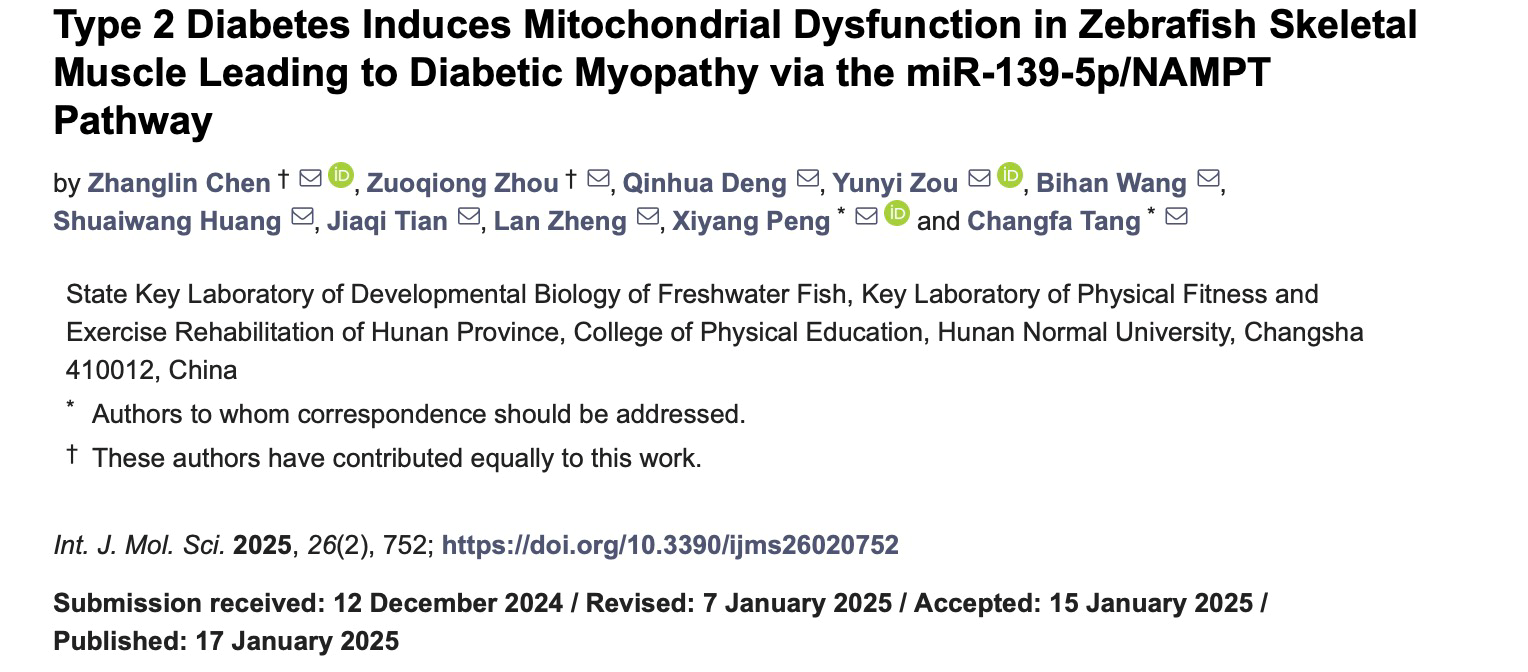A significant study titled "Type 2 Diabetes Induces Mitochondr

ial Dysfunction in Zebrafish Skeletal Muscle Leading to Diabetic Myopathy via the miR-139-5p/NAMPT Pathway" has been published in the International Journal of Molecular Sciences, a JCR Q2 journal. This research was conducted by a dedicated team from Hunan Normal University, explores the intricate mechanisms by which Type 2 Diabetes Mellitus (T2DM) affects skeletal muscle health and function.
The study demonstrates that T2DM, induced in zebrafish through a high-sugar diet and glucose solution immersion, leads to significant mitochondrial dysfunction in skeletal muscle. This dysfunction is characterized by reduced mitochondrial respiratory capacity, impaired lipid oxidation, and increased oxidative stress. Mechanistically, the research identifies the miR-139-5p/NAMPT pathway as a critical mediator in this process, with miR-139-5p upregulation suppressing NAMPT expression and thereby contributing to mitochondrial dysfunction and diabetic myopathy.
This research provides novel insights into the molecular pathogenesis of diabetic myopathy, highlighting the crucial role of mitochondrial dysfunction and the miR-139-5p/NAMPT pathway in mediating T2DM-induced skeletal muscle damage. These findings offer potential therapeutic targets for the prevention and treatment of diabetic myopathy, a common and debilitating complication of diabetes.
This study was jointly completed by Zhanglin Chen, Zuoqiong Zhou, and others, and Xiyang Peng and Changfa Tang are the corresponding authors. This project is supported by the National Natural Science Foundation of China, the Key Research Development Program of Hunan Province, and the Postgraduate Scientific Research Innovation Project of Hunan Province.
Editor: Peng Xiyang
First-Round Review Editor: Guo Enkai
Second-Round Review Editor: Bashir Mehvish